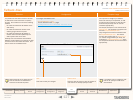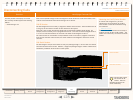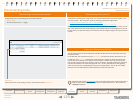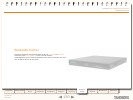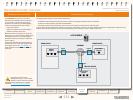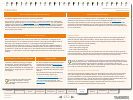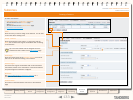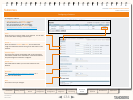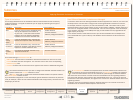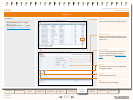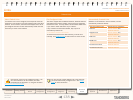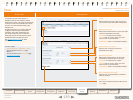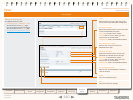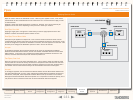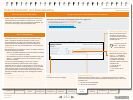
135
D14049.03
MAY 2008
Grey Headline (continued)
TANDBERG VIDEO COMMUNICATIONS SERVER
ADMINISTRATOR GUIDE
Introduction Getting Started
Overview and
Status
System
Conguration
VCS
Conguration
Zones and
Neighbors
Call
Processing
Bandwidth
Control
Firewall
Traversal
Maintenance Appendices
Subzones
Types of Limitations
You can apply bandwidth limits to the Default Subzone, Traversal Subzone and all manually
congured subzones. The types of limitations you can apply vary depending on the type of
subzone, as follows:
Limitation Description Can be applied to
Total Limits the total concurrent bandwidth being
used by all endpoints in the subzone at
any one time. In the case of the Traversal
Subzone, this is the maximum bandwidth
available for all concurrent traversal calls.
Default Subzone
•
Traversal Subzone
•
Manually congured subzones
•
Calls
entirely
within...
Limits the bandwidth of any individual call
between two endpoints within the subzone.
Default Subzone
•
Manually congured subzones
•
Calls into
our out of...
Limits the bandwidth of any individual call
between an endpoint in the subzone, and an
endpoint in another subzone or zone.
Default Subzone
•
Manually congured subzones
•
Calls
handled
by...
The maximum bandwidth available to any
individual traversal call.
Traversal Subzone
•
For all these settings, a bandwidth mode of:
NoBandwidth
•
will mean that no bandwidth is allocated and therefore no calls can be made.
Limited
•
will mean that limits are applied. You must also enter a value in the corresponding
bandwidth (kbps) eld.
Unlimited
•
will mean that no restrictions will be applied to the amount of bandwidth being used.
Use subzone bandwidth limits if you want to congure the bandwidth available between one
specic subzone and all other subzones or zones.
Use Pipes if you want to congure the bandwidth available between one specic subzone
and another specic subzone or zone.
If your bandwidth conguration is such that multiple types of bandwidth restrictions are placed on
a call (for example, if there are both subzone bandwidth limits and pipe limits), the lowest limit will
always apply to that call.
How Different Bandwidth Limitations are Managed
In situations where there are differing bandwidth limitations applied to the same link, the lower limit
will always be the one used when routing the call and taking bandwidth limitations into account.
For example, Subzone A may have a per call inter bandwidth of 128. This means that any calls
between Subzone A and any other subzone or zone will be limited to 128kbps. However, Subzone A
also has a link congured between it and Subzone B. This link uses a pipe with a limit of 512kbps.
In this situation, the lower limit of 128kbps will apply to calls between the two, regardless of the
larger capacity of the pipe.
In the reverse situation, where Subzone A has a per call inter bandwidth limit of 512kbps and a
link to Subzone B with a pipe of 128, any calls between the two subzones will still be limited to
128kbps.
Applying Bandwidth Limitations to Subzones
A non-traversal call between two endpoints within the same subzone would consume from
that subzone the amount of bandwidth of that call. A traversal call between two endpoints
within the same subzone must, like all traversal call, pass through the Traversal Subzone.
This means that such calls will consume an amount of bandwidth from the originating subzone’s
total concurrent allocation that is equal to twice the bandwidth of the call – once for the call from
the subzone to the Traversal Subzone, and again for the call from the Traversal Subzone back to the
originating subzone.
In addition, since this call passes through the Traversal Subzone, it will consume an amount of
bandwidth from the Traversal Subzone equal to that of the call.



